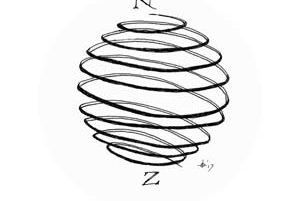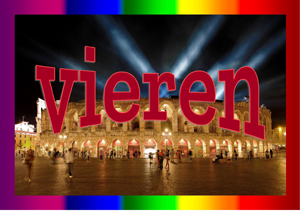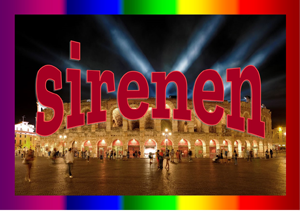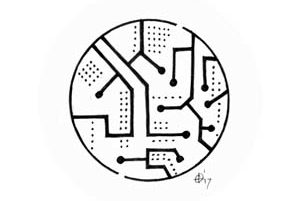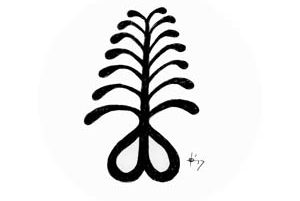Louise Müller
Wijsheidsweb, 26 november 2019
This briefing outlines a Ph.D. project to find indigenous religious reasons of why — unlike in other African countries — the traditional political institution (known as ‘chieftaincy’) among the Asante in Ghana has not been dismantled. Whereas previous researches have focused on legal, economic and political reasons for the persistence of chieftaincy among this cultural group, this doctoral research focuses on the native belief or (in jargon) ‘Indigenous Religion’ of tribal heads (in jargon) ‘Traditional Authorities’ as a possible explanatory factor[0] .
Key Points
- The Asante are a prominent cultural group in Ghana that belongs to the Akan, which is the umbrella name of cultural groups in Ghana, Togo and Côte d’Ivoire.
- The Asante are practitioners of Indigenous Religion, which legitimises the institution of chieftaincy. Since the foundation of the Asante Kingdom in 1701 their Traditional Authorities fulfil the indigenous religious functions of:
Mediators with the spiritual beings, from which they receive the sacred power to rule by occupying a “stool” (throne), and
B. Peacekeepers between Islamic and Christian religious communities in the Asante Region by incorporating aspects of Islam and Christianity into their Indigenous Religion. - The outcome of this doctoral research is that there is a positive correlation between the persistence of chieftaincy among the Asante and the continuation of indigenous religious mediation and peacekeeping of their traditional authorities.
Background
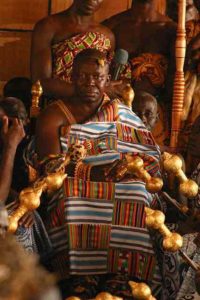
The persistence of the traditional political institution (known as ‘chieftaincy’) in the West-African country called Ghana is not self-evident.
In many African countries such as Tanzania, Uganda, Ethiopia and Burundi the indigenous political system has been completely dismantled.
However, in some African countries under former British Indirect Rule such as Ghana, Nigeria, Botswana, Lesotho and Swaziland the traditional political leaders have continued to regulate traditional politics with the approval of Ghana’s national and local state leaders.
The countries’ chiefs and queen mothers focus on issues concerning Indigenous Religion and traditional customs, such as the regulations about puberty, marriage and funeral rituals whereas Ghana’s local and national politicians concentrate on all other political issues. There is thus a dual political system in Ghana, in which the traditional authorities are incorporated in the democratic existing order.
The question that has been raised by scholars who have conducted research on chieftaincy in Ghana is of why in this West-African country the traditional political institution has continued to exist, whereas in other countries of the continent chieftaincy has been dismantled after their decolonisation and the foundation of African modern states.
This research fills the gap in explanatory factors for the persistence of Asante chieftaincy by concentration on Indigenous Religion. According to Cox (2007) ‘Indigenous Religions’ (IRs) are bound to a location; participants in the region are native to a place, or they belong to it. The single and overriding belief shared amongst Indigenous Religions derives from a kinship-based world-view in which attention is directed towards ancestor spirits as the central figures in religious life and practice. As such, IRs are restricted cosmologically because their spirit world is organised around a system of lineage. Ancestors are known by name; they belong to a place just as their descendants do, and they are related to living communities as spirit conveyors of ancestral traditions.
An important characteristic of the ‘Asante Indigenous Religion’ (AIR) is the veneration of ancestral spirits by pouring libation — which is a type of prayer — and offering animals such as sheep and chickens during ritual calendar days, which are known as the adae.
The reasons of why the Asante venerate their ancestors are twofold.
First, they attempt to maintain a good relationship with those spirits, since they are believed to be able to help them on both a community and individual basis, for instance by providing rain for the growth of crops or by making barren women pregnant. Asante ancestral belief is thus closely related to the believed capacity of ancestral spirits in providing fertility of human beings and the land on which they live.

Secondly, for the Asante ancestral veneration is their need to identify themselves as a cultural community. The ancestors give them an understanding of where they come from and who they are.
Among other factors that are important in terms of their identity are the language they speak (Twi), their cultural customs, and the land on which they are born. Asante call themselves as such because their parents and ancestors are Asante and they belong to a certain lineage which is called upon during the rites of passage in one’s life, such as a naming ceremony after being born, during one’s funeral celebration and, for girls only, also during their puberty rite.
The concept of ‘locality’ is also a very important characteristic of AIR, because it helps to understand its nature. For the Asante have a locative conception of existence that has cosmological implications. Unlike in the English language, in Twi, there is no linguistic difference between ‘being’ and ‘being in a place’. Consequently, to express that ‘something is there’, the Asante and other Akan say, Biribi wo ho, and to express that ‘something is’, they use the same sentence. For the Asante, then, existence is always connected to a location. An example is the supreme being (Nyame), whose dwelling place is in heaven. An Adinkra symbol that refers to the location of Nyame is the symbol of hope or Nyame Biribi Wo Soro (see figure 2). This translates directly to ‘God is in the heavens’.
The study
The methods used in this doctoral research were of a historical and empirical nature. Its main aim was to get insight in two indigenous religious roles of Asante traditional authorities in relation to chieftaincy. To write a history of the mediary and peacekeeping roles of Asante traditional authorities, I combined existing knowledge of the Asante history written by the recognized historians Wilks and McCaskie with research in the historical archives in Kumasi and Accra. To give insight in the contemporary meaning of the Asante traditional authorities indigenous religious roles I carried out in depth interviews among the Asante and observed their indigenous religious rituals, such as the Asanteman Adae Kese (formerly known as ‘Odwira’) yam festival, a chieftaincy installation ritual, a prayer (pouring of libation) ritual and a royal pre-burial ritual. In particular this research intends to:
- Research whether there is a continuation of the Asante traditional authorities’ indigenous religious roles (those of mediators and peacekeepers) from the eighteenth century until today.
- Explore the content of these roles in the pre-colonial, the colonial and the postcolonial era.
- Research the complex relationship of these indigenous religious roles with the persistence of Asante chieftaincy.
- Show that indigenous religious roles of Asante chiefs and queen mothers have their roots in the pre-colonial era.
- Show that the colonization and decolonisation of the Asante affected the exercise of the indigenous religious function of their traditional authorities, but did not mean the end of their existence.
- Prove the existence of a positive correlation between the continuation of the intermediary function of Asante traditional authorities and the persistence of chieftaincy by conducting research in historical archives and conducting fieldwork on indigenous religious festivals and rituals.
- Prove that there is a positive correlation between the continuation of the peacekeeping function of Asante traditional authorities and the persistence of chieftaincy shown by research of the historical archives and in-depth interviews with Asante traditional authorities, Muslim headmen, Christian church leaders and their subjects.
Historical research
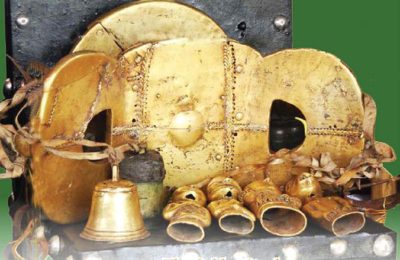
Historical research shows that the Asante traditional authorities’ indigenous religious mediation goes back to the eighteenth century when the Asante created their Kingdom and its allegory of foundation: the myth of the Golden Stool. This myth explains why the Asantehene has sacred powers and therefore has a divine right to rule. According to the Gold Coast government anthropologist, Capt. R.S. Rattray, the myth goes:
[…] Osei Tutu I was informed [LM: by Okomfo Anokye or ‘Anotchi’] and held a great gathering in Kumasi in the presence of the king and the Queen mother One Manu, and the chief of Kokofu, called Gyami, the Kokofu Queen Mother, Ajua Pinaman, and many others. Anotchi, in the presence of a huge multitude, with the help of his supernatural power, stated to have brought down from the sky, in a black cloud, and amid rumblings, and in air thick with white dust, a wooden stool with three supports and partly covered with gold. This stool did not fall to earth but alighted slowly upon Osei Tutu’s knees. There were, according to some authorities, two brass bells on the stool when it first came from above. According to others, Anotchi caused Osei Tutu to have four bells made, two of gold and two of brass, and to hange one on each side of the stool. Anotchi told Osei Tutu I and all the people that this stool contained the sunsum (soul or spirit) of the Asante nation, and that their power, their health, their bravery, their welfare were in this stool. To emphasise this fact, he caused the king and every Asante chief and all the queen mothers to take a few hairs from the head and pubes, and a piece of the nail from the forefinger. These were made into a powder and mixed with ‘medicine’. Some was drunk and some poured or smeared on the stool. Anotchi told the Ashante that if this stool was taken or destroyed, then, just as a man sickens and dies whose sunsum during life has wandered away or has been injured by some other sunsum, so would the Asante nation sicken and lose its vitality and power (Rattray 1923:289-290).
The myth of the Golden Stool explains why Asante subjects should rely on the Asantehene who controls their presumed individuality. Although the Asantehene allows his subjects to have their own character, he watches their behaviour and bases his judgements on moral values. The Asante subjects perceive the Asantehene as their supreme moral judge. Not only is he regarded as having inherited supernatural powers from his ancestors but he is also viewed as the ‘owner’ of the individual characters (sunsum) of his people that come together in the Golden Stool.
Under British colonisation, various indigenous religious activities were forbidden because the British believed them to be barbarous and they were not in line with the Christian belief that was meant to legitimize the British colonisation of non-western countries. Archives of the colonial period show that after the deportation of Asantehene Prempeh I, the King of Asante to Sierra Leone and later the Seychelles Islands, indigenous religious rituals such as the veneration of the ancestral spirits, which were believed to dwell inside royal stools, were banned. However, throughout the colonial period, these rituals continued to be practised, although not openly and on a state level, such as observed by the British Governor Sir Shenton who wrote in 1924 that:
In the eyes of the government he [LM: King Prempeh I] returned as a private citizen… in the eyes of Ashanti it was their Asantehene who had come back to them. The Golden Stool had once more an occupant and the people had once more their supreme spiritual head.
Empirical research
Research of the royal pre-burial ritual of the Asante paramount chief Nana Saaman Nantwi II shows that in theory the traditional authorities in contemporary Ghana are actually appointed to prevent certain indigenous religious rituals that focus on mediation from taking place there where these rituals are believed to be harmful for the wellbeing of Ghanaians. In practise, however, there is a positive relationship between the continuation of the indigenous religious intermediary function of Asante traditional authorities and the persistence of Asante chieftaincy. Chiefs and queen mothers are keen on breaking their own regulations with regards to traditional customs for indigenous religious purposes. Chiefs are prominent persons within the society, which means that when they turn into ancestral spirits, they will also be prominent. And so, it is especially important for the family of deceased chiefs, but also for their subjects, to make sure that the deceased chief will remember them positively, which can be realised by the celebration of a lavish funeral. As Rattray (1927:104) puts it:
In the ceremonial for a dead king the differences [LM: in comparison with ordinary deceased individuals] arose from a desire on the part of his people, not only to accentuate the disparity between the king, the Asantehene, and the common herd, and even the great chiefs, but also to preserve his remains more carefully and reverently in order that these might serve as a medium or shrine for his spirit when it was summoned to return to his people in times of national reunion or national emergencies.
In depth interviews with Asante respondents and leaders with other peacekeeping bodies shows that chieftaincy is a unique peacekeeping body in the Asante society. Whereas other peacekeeping bodies, such as the ‘Asante Christian Chief and Queen mother Association’ (ACCQA) only help Christians, the Asante traditional authorities are of assistance to everybody in the society regardless of their religious or political or cultural (ethnic) background. The Assemblies of God church goer Osei Hyiaman (32) told me, for instance, that according to him the relationship between the pastors and the chiefs is as follows:
If I have a problem, I would first go to my chief. If he cannot solve my problem, then he can invite my pastor. My chief and my pastor work together, because we all live in the same community. If I have a problem with a Christian of a different denomination in my area, who obeys the same chief, it works as follows: Mister X and I go to our chief. If he cannot solve the problem, we both go to our own pastor. Then, the chief can invite both our pastors and they can solve the problem together with us. The chief is thus the central figure in the community who brings his subjects together no matter their religion. If I have a problem with a member of my own church, I will only seek advice of my pastor (Osei Hyiaman, 32).
Because of the uniqueness of chieftaincy as an indigenous religious peacekeeping body, its disappearance would have a negative effect on the maintenance of peace between Muslims, Christians and indigenous believers. There is thus also a positive relationship between indigenous religious peacekeeping and the persistence of chieftaincy.
Policy implications
In Ghana, traditional authorities have to wear different hats. As political leaders, they are the ones who create the rules with regards to traditional customs. As indigenous religious leaders, in order to maintain respect of their subjects as mediators with the ancestral spirits, they break their own rules. These conflicting roles of chiefs and queen mothers have effect on their public behaviour and make them act contradictory in various ways. Regulations around funerals are, for instance, so that certain practices are officially forbidden according to the Houses of Chiefs, so as widowhood rites. In practice, however, they are continued to be performed, because in the Asante Indigenous Religion which the chief and queen mothers represent it is believed that when the performance of widowhood rites is left out, the spirit of the deceased husband will continue haunting his former wife. Chieftaincy regulations are thus often different from the practice.
- Cox, J.L. From Primitive to Indigenous: The Academic Study of Indigenous Religions. Edinburgh: Ashgate, 2007.
- McCaskie, T.C. State and Society in Pre-Colonial Asante. Cambridge: Cambridge University Press, 1995.
- “Ahyiamu-a Place of Meeting: An Essay on Process and Event in the History of the Asante State.” Journal of African History 25, no. 2 (1984): 169-88.
- Rattray, R.S. London: Oxford University Press, 1923.
- Rattray, R.S. Religion and Art in Ashanti. London: Oxford University Press, 1927.
- Wilks, Ivor. Asante in the Nineteenth Century: The Structure and Evolution of a Political Order. Cambridge: Cambridge University Press, 1989.
- Wiredu, Kwasi. Cultural Universals and Particulars: An African Perspective African Systems of Thought. Bloomington: Indiana University Press, 1996.
Notes
[0] For the author’s monograph ‘Religion and Chieftaincy in Ghana’, please see: www.lit-verlag.de/isbn/3-643-90360-0
[1] Source: Asantehene Osei Tutu; king of the Asante state (Asanteman) in Ghana, West Africa.
[2] Please see the QFWF Adinkra game, which matches Asante proverbs with Adinkra symbols.
[3] Source: The Golden Stool (Sika Dwa Kofi).







